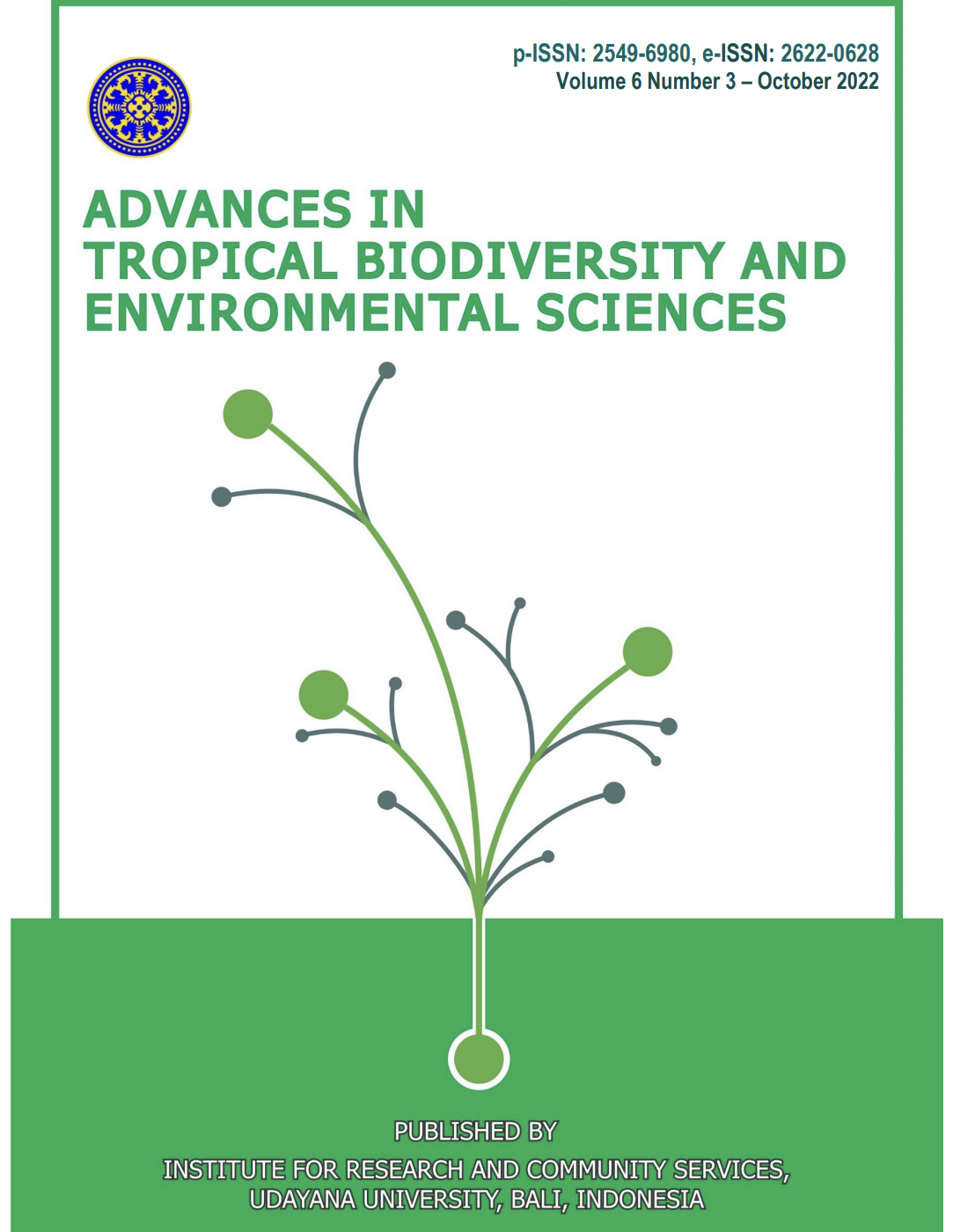Groove Planting System (GPS) Analysis of The Growth of Teak (Tectona grandis) in Ex-Lime Stone mining land
Abstract
The groove planting system (GPS) is one of the modifications in the plant planting system on ex-limestone mining land. The method used in the implementation of the GPS is to create a basin in the form of an elongated groove on the ex-limestone mining land that has not been reclaimed. Tectona grandis can be grown on less fertile land. This is even recommended by the government, where forest areas were set for planting with teak limited to places that are less fertile and steep. The growth of a plant can be influenced by environmental factors and genetic factors. The interaction between these two factors will determine the growth of a plant. The purpose of this study was to analyze the effectiveness of the Groove planting system (GPS) on the growth of teak (Tectona grandis) in limestone ex-mining areas. The method in this research was an experimental method that was carried out in the former limestone quarry of PT Semen Indonesia in 2020. The results showed that the growth of teak seen from the parameters of plant height, bar chart, leaf number, and leaf color increased. For example, leaf color with a conventional system has a scale of 3 with a GPS scale of 5. Conclusion The GPS method is very effective for the growth of teak (Tectona grandis) because there is an increase in growth and color scale in terms of plant height, stem diameter, number of leaves, and leaf color parameters.
Downloads
References
[2] Gusmailina, S Komarayati and H.S. Wibisono. 2020. Potential Uses of Teak Leaf Litter for Liquid Smoke and of Other Utilization: A Review. IOP Conf. Series: Materials Science and Engineering 935.
[3] Purwanto, R Hadi, H Simon, and S Ohata. 2003. Estimation of Net Primary Productivity of Young Teak Plantations under the Intensive Tumpangsari System in Madiun, East Java. Tropics 13(1): 9–16.
[4] Prayudyaningsih, Retno and R Sari. 2016. Aplikasi Fungi Mikoriza Arbuskula (FMA) Dan Kompos Untuk Meningkatkan Pertumbuhan Semai Jati (Tectona Grandis Linn.f. ) Pada Media Tanah Bekas Tambang Kapur. Jurnal Penelitian Kehutanan Wallacea 5(1): 37–46.
[5] Murtinah, Veronika, Marjenah, A Ruchaem, and Daddy Ruhiyat. 2015. Pertumbuhan Hutan Tanaman Jati (Tectona grandis Linn.F.) Di Kalimantan Timur. Jurnal AGRIFOR XIV(2): 287–92.
[6] Supriono, Bambang and L Setyaningsih. 2012. Pertumbuhan Tanaman Jati Unggul Nusantara Dengan Pola Agroforestry Umur Lima Tahun. Jurnal Sains Natural 2(2): 179–85.
[7] Wardani, Bintarto Wahyu, and Budi Santoso. 2009. Pertumbuhan Tanaman Jati (Tectona grandis L. f) Dari Berbagai Ras Lahan Di Pulau Muna. Jurnal Penelitian Hutan Tanaman 6(2): 63–71.
[8] Santoso, B, M.Y Misto and M.A Rakman. 2000. Pertumbuhan Tanaman Jati Dari Berbagai Ras Lahan Di Kendari Selatan. Balai penelitian dan Pengembangan Kehutanan Sulawesi. Makassar.
[9] Indrioko, Sapto, E Faridah and A.Y Widhianto. 2010. Keberhasilan Okulasi Jati (Tectona grandis L.f) Hasil Eksplorasi Di Gunung Kidul. Jurnal Ilmu Kehutanan IV(2).
[10] Ruchaemi, A. 2013. Ilmu Pertumbuhan Hutan. Mulawarman University Press. Samarinda. Cetakan Pertama, Edisi Pertama 187.
[11] Yunianti, A Detti and M Muin. 2009. Buku Ajar Pertumbuhan Pohon Dan Kualitas Kayu. Fakultas Kehutanan Universitas Hasanuddin.
[12] Kurniahu, Hesti, Sriwulan Sriwulan, and Riska Andriani. 2018. Pemberian PGPR Indigen Untuk Pertumbuhan Kacang Tanah (Arachis hypogaea L.) Varietas Lokal Tuban Pada Media Tanam Bekas Tambang Kapur. Agrovigor: Jurnal Agroekoteknologi 11(1): 52–57.













